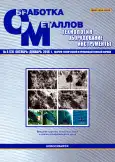The identification of defects in advanced composite materials by the means of ultrasonic signal is considered and analysis of the residual resource of engineered structures is made. The main defects in the structure of composite materials are the following: displacement, rotation and warping of the individual layers of the reinforcing material; superficial swelling, separation, distortion; increased porosity, cracks, sinks, uneven shrinkage materials; reduction in adhesion of the binder and filler, and others. The early recognition of defects and forecasting of the residual resource of engineered structures gives the opportunity to avoid the loss of sealing of engineered parts and structures, environmental problems concerned with the destruction of pipelines. Undetected internal defects can not only lead to significant economic losses, environmental pollution, but also to the loss of human life. The working conditions of the plastic materials, especially composites, are widely used for replacement of parts and components made of rare materials, ferrous and nonferrous metals and alloys based on them, working in hostile environments. This makes it possible to improve the reliability and durability of the structure as a whole. However, in modern working conditions to evaluate the quality of products a lot of enterprises have to selectively destroy the integrity of the samples under investigation in the control of material properties. From an economic point of view, this leads to an increase of the production cycle and the cost of production. A method of ultrasonic diagnostics using hardware-software complex, allowing to reveal internal defects, the presence of inclusions or inhomogeneities on the structure of the composite material without destroying the product, to reduce the economic, environmental and human costs is offered.
 6-15
6-15


 16-23
16-23


 24-33
24-33


 34-42
34-42


 43-51
43-51


 52-62
52-62


 63-74
63-74







